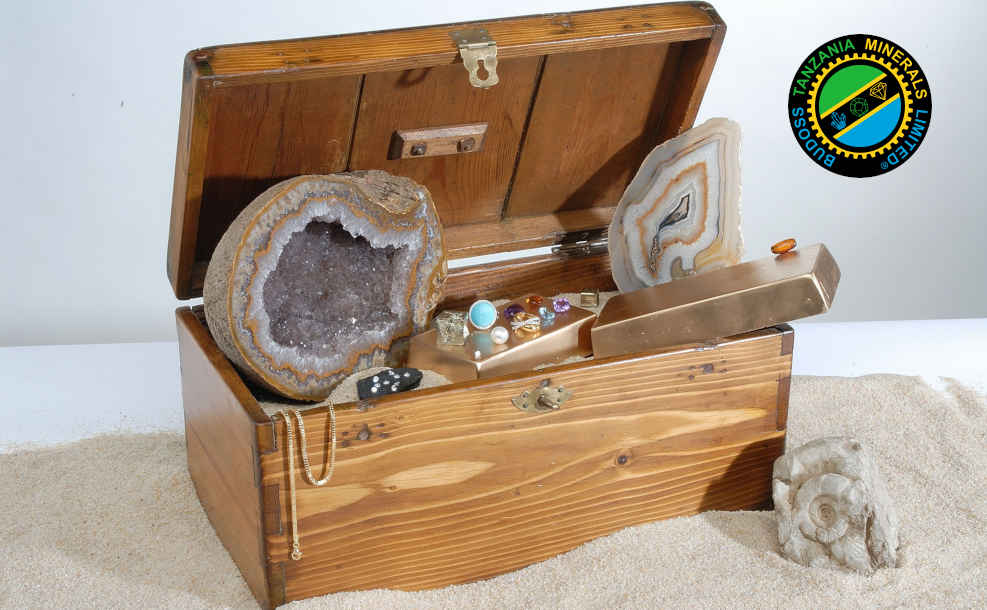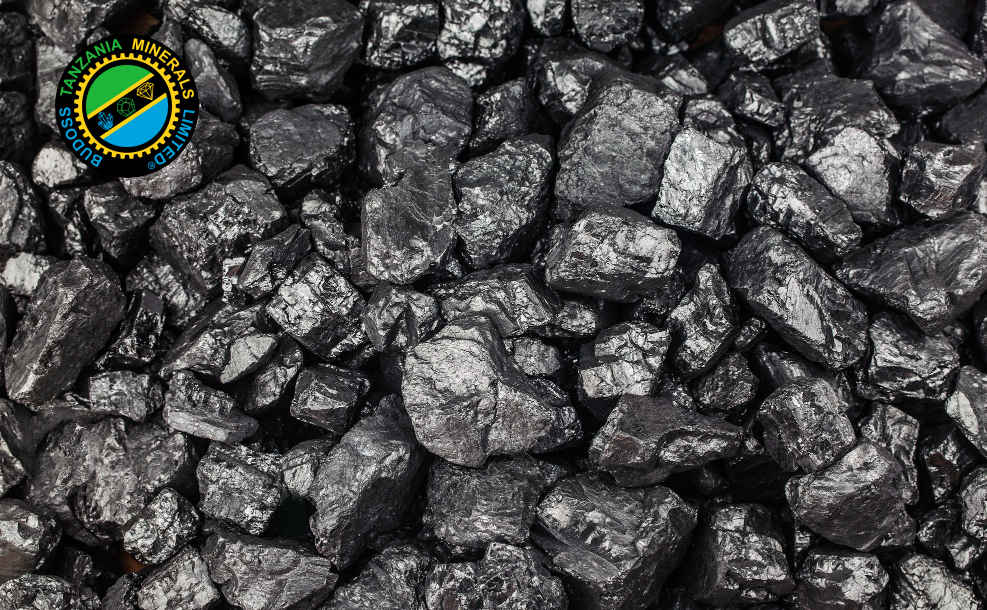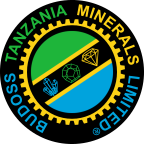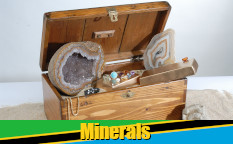NATURAL RESOURCES
Tanzania is a country that is endowed with a lot of natural resources, a favorable climate, political stability and an excellent geographical location in the region, which makes it accessible to potential export markets in the region, the Gulf States and South Asia. Dar es Salaam is the largest port of entry in Tanzania and serves as a gateway to landlocked neighboring countries.
It has a long coastline and attractive beaches, amazing wildlife parks and reserves, minerals, forests, and the three greatest lakes in the African continent and the Indian Ocean form most of its borders. For example, Tanzania has about 33.5 million hectares of forests and woodlands with approximately 13 million hectares of this total forests cover protected under the forests reserve regime. It has 730,000 metric tons of fishery resources that could be harvested annually without any harm to their re-generational capability.
Mining
Opportunities in the supply chain:
- value adding ventures particularly in gemstones and jewellery manufacturing (e.g. lapidary, cutting, polishing, etc);
- supply of mining services such as drilling, airborne geophysical surveys or refining. This also includes supply and/or hiring of equipment for large and small scale miners as well as contract mining;
- training in gemstone cutting and polishing;
- training in jewelry designing & manufacturing;
- training in gemology;
- training in diamond grading;
- establishing laboratory for testing and certification of gemstones;
- gemstone treatment.
Mining is one of the leading sectors in Tanzania, with the value of mineral exports increasing tremendously each year. The minerals found in Tanzania include metallic minerals, industrial minerals, and energy minerals. Minerals export accounted for USD 2.3 billion of the total value of Tanzania’s export in 2019 (i.e. 45%).

Minerals available in Tanzania include gold, diamonds, gemstones (such as rubies, aquamarine, tanzanite, sapphire, emerald, rhodolite, opal, zircon, alexandrite, garnets, tourmaline, spinel, peridot, iolite) Iron and Base metals (nickel and cobalt), platinum group metals: (platinum, palladium and rhodium), Industrial minerals (soda ash, kaolin, salt along the Coast and inland lakes, vermiculites, limestone, silica sands, phosphate, gypsum, mica, dimension stones i.e. granites, travertine, marbles, quartzite), coal resources and natural gas.
The mining sector contributes approximately 3.0% to annual GDP. In his speech during the official opening of the 12th Parliament of Tanzania on 13th November 2020, President-elect John Pombe Magufuli said “It is our belief that the mining industry will contribute at least 10% of GDP by 2025.”
In the last decade, the country has witnessed growth in mining sector with reputable mining companies e.g. Barrick Gold, Ashanti Anglo-Gold, and Resolute investing in large-scale mines. Tanzania is the 4th largest gold producer in Africa after South Africa, Ghana and Mali and is the sole producer of the precious stone Tanzanite in the world. Gold production currently stands at roughly 40 tonnes a year, copper at 2980 tonnes, silver at 10 tonnes and diamond at 112670 carats. Business Monitor International (BMI) forecasts average annual growth in the mining sector of 7.7 per cent between 2013 and 2015. BMI also predict a doubling in value of the sector to around 1.28 bilion USD.
The Tanzania mining industry remains attractive to investors, given the next few years of significant diversification to the mining of nickel, uranium and coal. There is also availability of investment incentives and supply chain opportunities in the mining sector.
Moreover investments in coal would receive a boost as Tanzania looks to coal-fired power stations to offset energy shortages. Gold mining exploration and gold production, gem stones mining and trading, as well as, small and artisanal mining activities are experiencing considerable growth as well.
Tanzania Metallic Minerals
The metallic minerals found in Tanzania include gold, iron, silver, copper, platinum, nickel, and tin. Tanzania Gold reserves in Tanzania are estimated at about 45 million ounces.
Gold

Gold production in Tanzania stood at 39 tons in 2018, compared to 43 tons in 2017 (-10%) and 40 tons in 2014 (-3%). Tanzania’s gold production increased by more than 700% over the past 25 years, from 5 to 40-50 tons per year, while South Africa’s production of gold decreased from over 500 tons in 1990 to 117 tons in 2018. Gold exports account for more than 90% of Tanzania’s total mineral exports with USD 1.5 billion in 2018, compared to USD 943 million in 2014, an increase of 59%.
Iron
Tanzania iron ore reserves in Tanzania are located mainly in Liganga, Uluguru Mountains, Mbabala near Lake Tanganyika, Karema, Manyoro Gondite, and Itewe. The Liganga iron ore mine holds the biggest iron resources in Tanzania with proven reserves of 126 million tons. Tanzania China International Mineral Resources Ltd (TCIMRL) has invested USD 1.8 billion at Liganga for the establishment of an iron ore mine and iron and steel complex to produce 1.0 million tons per year of iron and steel products, vanadium pentoxide and titanium dioxide. The project is expected to be completed by the end of 2020.
Diamonds
Diamonds produced by Petra Diamonds, through its subsidiary Williamson Diamonds Limited, holds 75% of the ownership rights over the mine, while the remaining 25% is owned by the Government of Tanzania. According to Petra Diamonds, the Williamson mine contains large diamond resources of approximately 38.1 million carats. In 2019, the company achieved the highest level of production at the mine in over 40 years, with 399,615 carats produced (2020:298,130 carats).
Tanzanite
Tanzania is the sole producer of this precious gemstone, this peculiar mineral is only found in Tanzania. At the time of writing this Nov 2020 Tanzania had only one major investor, Tanzanite One and other small scale miners on Tanzanite.
Tanzanite is mined in a very small mining area (approximately 7 km (4.3 mi) long and 2 km (1.2 mi) wide) near the Mererani Hills, near Mount Kilimanjaro. Tanzanite is used to make ornaments. It is one of the rarest gemstones on Earth, and one local.
The precious stone’s appeal lies in its variety of hues, including green, red, purple and blue.
Its value is determined by rarity – the finer the color or clarity, the higher the price. The production of tanzanite is volatile standing at 21.5 tons in 2017, compared to 30.9 tons in 2016 and 6.4 tons in 2015.
The gemstone was given the name ‘Tanzanite’ by Tiffany & Co. after Tanzania, the country in which it was discovered. The scientific name of “blue-violet zoisite” was not thought to be sufficiently consumer friendly by Tiffany’s marketing department, who introduced it to the market in 1968. In 2002, the American Gem Trade Association chose tanzanite as a December birthstone, the first change to their birthstone list since 1912.
The record of obtaining the heaviest stone was made by a small-scale miner in Tanzania who becomes an overnight millionaire after selling two rough Tanzanite stones – the biggest ever in the country. Saniniu Laizer earned L2.4m ($3.4m) from the country’s mining ministry for the gemstones, which had a combined weight of 15kg (33 lb).
Coal

Coal reserves in Tanzania are estimated at 1.9 billion tonnes, 25% of which are proven. Tanzania’s coal production reached 712,136 tonnes in 2019, compared to 257,321 tonnes in 2015 (+177%).

Coalfields with the highest potential are Ketawaka-Mchuchuma in the Ruhuhu Basin, Ngaka fields in the South-West of Tanzania, and Songwe Kiwira fields. Coal is currently exploited on small scale at Kiwira Coal Mine in Mbeya Region and Tancoal Energy Limited Mine at Ngaka in Ruvuma Region.
Uranium
Tanzania has found huge deposits of uranium mainly in Namtumbo (Mkuju), Bahi, Galapo, Minjingu, Mbulu, Simanjiro, Lake Natron, Manyoni, Songea, Tunduru, Madaba, and Nachingwea. One of the major uranium development projects is the Mkuju River Project with estimated reserves of 182.1 million tons. The project’s operator is Mantra Tanzania, a subsidiary of Russia’s Uranium One Group. In 2017 Mantra suspended further development of the project due to low uranium prices.

